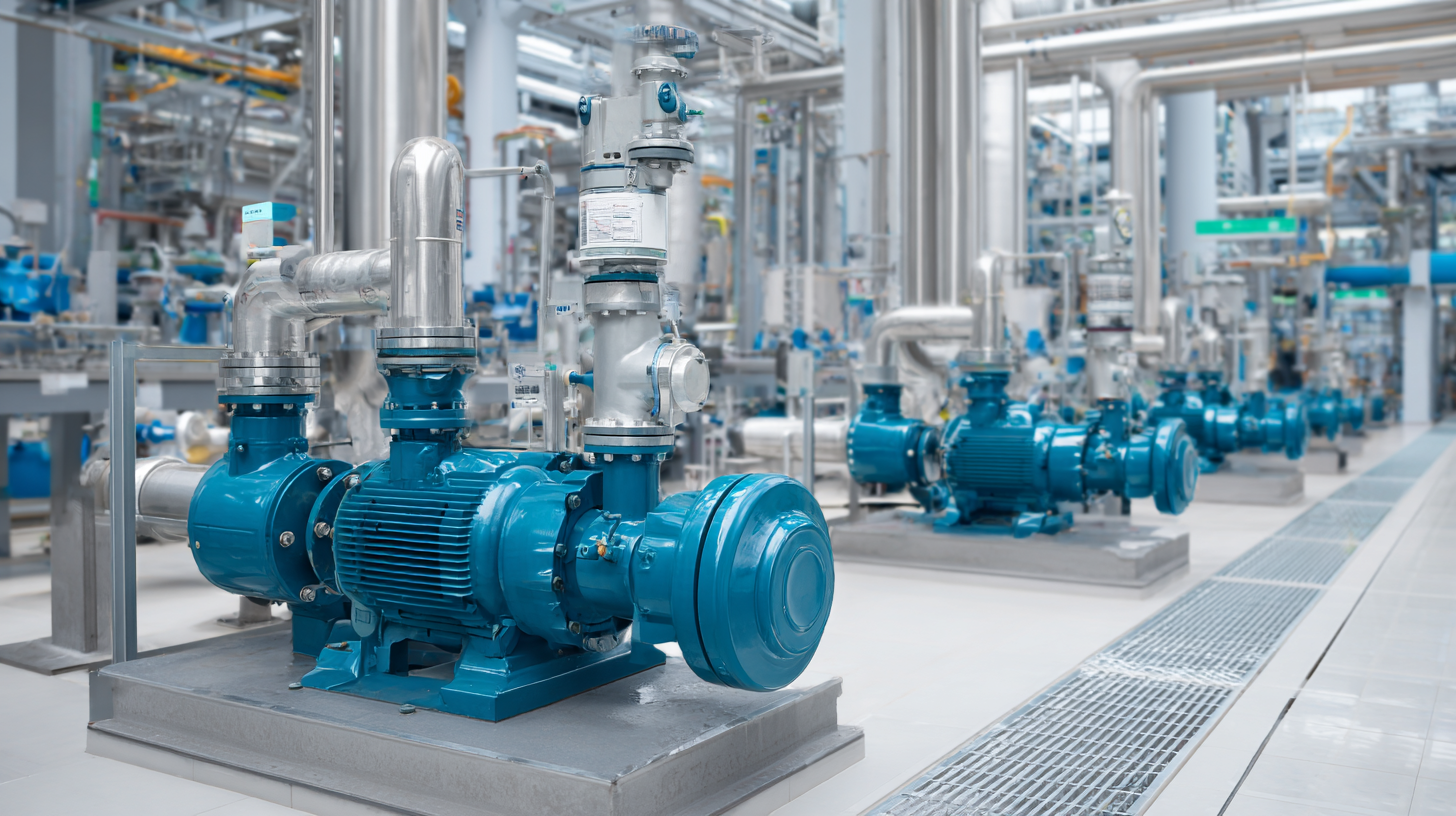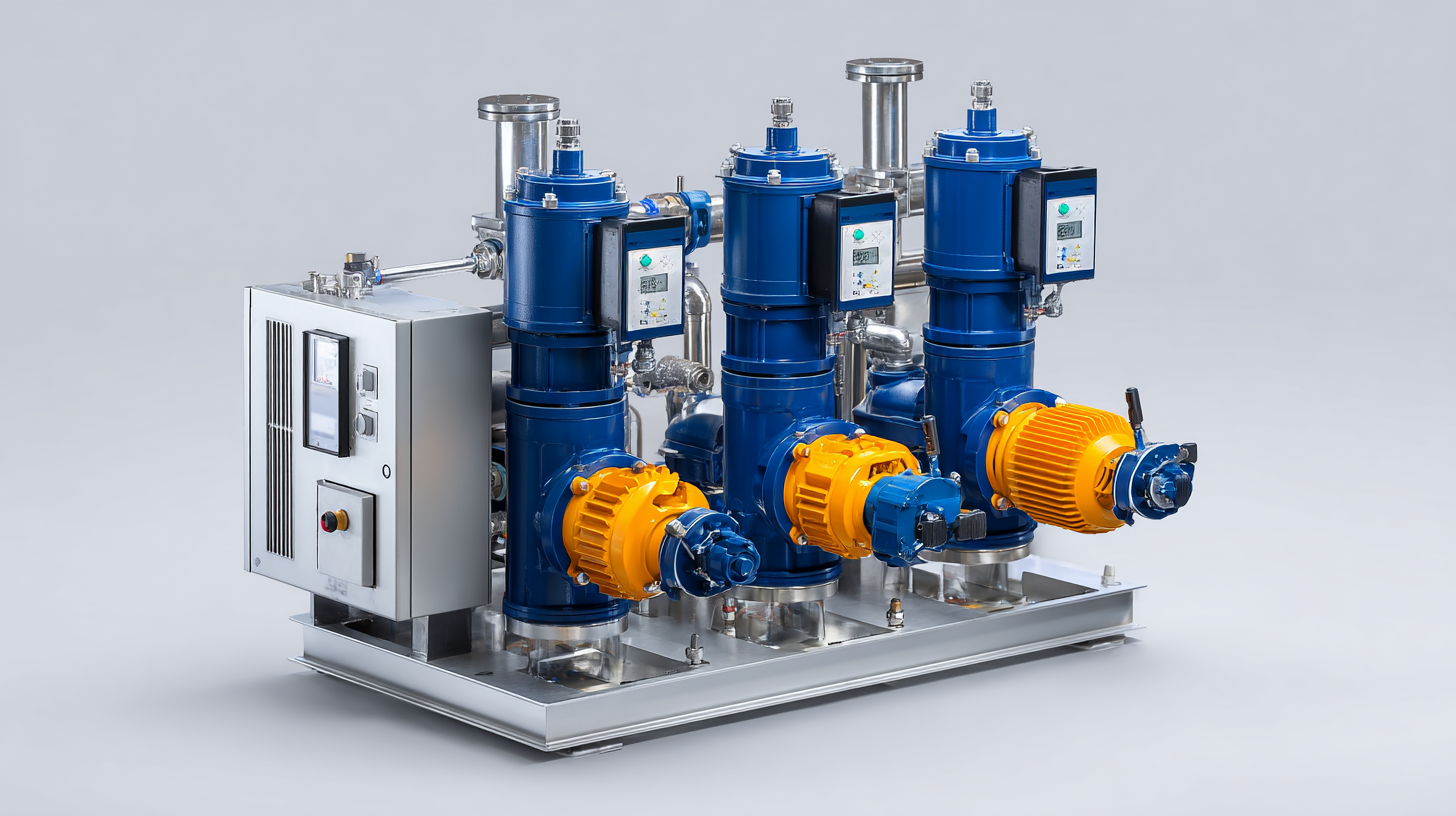Blog
- Home
- Blog
How to Choose the Best Chemical Pumps for Your Industrial Needs
In the ever-evolving landscape of industrial operations, selecting the right chemical pumps is critical for optimizing efficiency and ensuring safety. According to a recent report by Research and Markets, the global chemical pump market is projected to reach $8.3 billion by 2027, with a compound annual growth rate (CAGR) of 4.5%. This surge is driven by increased demand across various sectors, including chemical processing, water treatment, and pharmaceuticals.
 With numerous options available, from centrifugal to diaphragm pumps, understanding your specific application and operational requirements is paramount.
By evaluating factors such as fluid characteristics, flow rate, and pressure requirements, businesses can identify the most suitable chemical pumps to enhance productivity, reduce downtime, and meet regulatory standards. This guide will delve into the essential considerations for choosing the best chemical pumps tailored to your industrial needs.
With numerous options available, from centrifugal to diaphragm pumps, understanding your specific application and operational requirements is paramount.
By evaluating factors such as fluid characteristics, flow rate, and pressure requirements, businesses can identify the most suitable chemical pumps to enhance productivity, reduce downtime, and meet regulatory standards. This guide will delve into the essential considerations for choosing the best chemical pumps tailored to your industrial needs.
Identifying Your Specific Industrial Pump Requirements
When selecting chemical pumps for industrial applications, the first step is to identify your specific requirements based on factors such as the type of chemical being handled, flow rate, and operational conditions. According to a recent report by MarketsandMarkets, the global chemical pump market is projected to reach $5.7 billion by 2025, driven by the increasing demand for reliable and efficient fluid handling solutions across various industries. Understanding the chemical properties—such as viscosity, corrosiveness, and temperature—is crucial in selecting the right pump material to ensure durability and optimal performance.

In addition to chemical compatibility, consider the required flow rate and pressure range for your operations. The Hydraulic Institute indicates that the proper pump selection can enhance system efficiency by up to 30%, reducing operational costs significantly. Furthermore, evaluating the environmental conditions where the pump will be installed—such as temperature fluctuations and potential exposure to hazardous environments—is integral to ensuring safety and reliability. By carefully assessing these criteria, industries can make informed decisions, ultimately leading to improved productivity and reduced downtime.
Understanding Different Types of Chemical Pumps Available
When choosing the best chemical pumps for industrial needs, it’s essential to understand the different types available. Chemical pumps are typically categorized into two main types: positive displacement pumps and centrifugal pumps. Positive displacement pumps operate by trapping a fixed volume of liquid and forcing it through the pump's outlet, making them ideal for high-viscosity fluids or applications requiring precise flow rates. These pumps are commonly used in various industries, including pharmaceuticals and chemical manufacturing, where the fluids may contain aggressive chemicals.
Centrifugal pumps, on the other hand, utilize a rotating impeller to move liquids and are more suitable for low-viscosity fluids. They are generally more efficient at transferring large volumes of fluid quickly and are preferred in processes involving clean or slightly viscous fluids. Understanding the unique characteristics and applications of each pump type is crucial. Factors such as fluid properties, required flow rate, and system pressure will guide the selection process, ensuring that the chosen pump meets the specific requirements of the industrial application.
How to Choose the Best Chemical Pumps for Your Industrial Needs - Understanding Different Types of Chemical Pumps Available
| Type of Pump | Flow Rate (GPM) | Pressure (PSI) | Application | Materials Compatible |
|---|---|---|---|---|
| Centrifugal Pump | 10-500 GPM | 20-150 PSI | General Liquid Transfer | Water, Acids, Bases |
| Diaphragm Pump | 0.5-300 GPM | 0-100 PSI | Chemical Metering | Corrosive Liquids, Slurries |
| Peristaltic Pump | 0.1-200 GPM | 0-30 PSI | Food and Beverage, Pharmaceuticals | Food-Grade Liquids, Chemicals |
| Gear Pump | 1-200 GPM | 50-300 PSI | Oil Transfer, Viscous Liquids | Oil, Heavy Chemicals |
| Screw Pump | 10-1000 GPM | 20-250 PSI | Heavy Fuel, High Viscosity Fluids | Heavy Oils, Chemicals |
Evaluating Pump Performance Metrics and Features
When selecting the best chemical pumps for industrial applications, evaluating pump performance metrics and features is crucial. Key performance indicators such as flow rate, pressure, efficiency, and durability should be assessed. For instance, the recent experimental studies on variable-speed contra-rotating pump-turbines highlight the importance of adaptability in flow conditions, which can significantly enhance performance in low-head pumped hydro energy storage applications. This adaptability is especially relevant in industries requiring varying operational conditions.
Furthermore, advanced simulation models, like those for air-source heat pumps, emphasize the role of efficiency metrics in real-world applications. Incorporating pressure drop parameters into performance evaluations can lead to more accurate assessments of pump behavior under operational pressure conditions. Additionally, emerging technologies, such as data-driven optimization and deep reinforcement learning approaches, present innovative ways to improve energy consumption and operational efficiency in pump systems. By focusing on these performance metrics and capabilities, industries can make informed decisions that align with their specific chemical handling needs.
Comparing Materials and Construction for Chemical Pump Durability
 When selecting chemical pumps for industrial applications, the construction materials and overall durability are crucial factors that warrant careful consideration. Pumps made from corrosion-resistant materials such as stainless steel and specific polymers can significantly extend the lifespan of the equipment, especially in environments where harsh chemicals are handled. A study indicates that the global chemical pump market is projected to grow at a CAGR of 7.5% from 2021 to 2028, reflecting rising demand for reliable chemical transfer solutions across various industries.
When selecting chemical pumps for industrial applications, the construction materials and overall durability are crucial factors that warrant careful consideration. Pumps made from corrosion-resistant materials such as stainless steel and specific polymers can significantly extend the lifespan of the equipment, especially in environments where harsh chemicals are handled. A study indicates that the global chemical pump market is projected to grow at a CAGR of 7.5% from 2021 to 2028, reflecting rising demand for reliable chemical transfer solutions across various industries.
The recent advancements in sustainable materials also play a central role in the development of chemical pumps. For instance, sustainable fiber-reinforced composites are emerging as viable alternatives due to their light weight and corrosion resistance, thus enhancing operational efficiencies and reducing long-term costs. Moreover, the integration of carbon capture and energy storage technologies within industrial processes can improve the sustainability of chemical handling systems.
This trend aligns with efforts in the chemical industry to transition towards greener practices while maintaining robust performance standards. In conclusion, a comprehensive assessment of material properties not only contributes to pump durability but also supports the broader initiative of industrial decarbonization.
Considering Maintenance, Support, and Cost Effectiveness
When selecting chemical pumps for industrial needs, it's essential to prioritize maintenance, support, and cost-effectiveness. Industries are increasingly turning to smart technologies such as IoT and AI to enhance operational efficiency and reduce downtime. According to recent forecasts, the artificial grass broom market is projected to grow from $120 million in 2022 to $250 million by 2030, highlighting the need for effective maintenance strategies that leverage these advanced technologies. With a compound annual growth rate of 10.1% expected from 2024 to 2030, companies must ensure their chemical pumps align with this shift towards digital integration and predictive maintenance.
Moreover, businesses of all sizes—from large corporations to small and medium enterprises—are seeking cost-effective chemical pump solutions that come with robust support and maintenance options. For example, the Australian wind turbine operation and maintenance market is anticipated to grow from $603.03 million in 2024 to $906.28 million by 2032, reflecting a compound annual growth rate of 4.82%. This trend signifies the importance of investing in reliable chemical pumps that not only meet current demands but also adapt to future technological advancements, ensuring sustainable operations in an increasingly competitive landscape.
Comparison of Chemical Pump Types by Maintenance Frequency and Cost Effectiveness
Related Posts
-

5 Best Chemical Pumps for Efficient Industrial Use
-

Unlocking Efficiency: The Significant Advantages of Plunger Metering Pumps in Process Industries
-

7 Best Practices for Choosing a High Pressure Metering Pump
-

5 Essential Tips for Maximizing Performance of High Pressure Hydraulic Pumps
-

10 Tips for Maximizing Efficiency with High Pressure Hydraulic Pumps in Industrial Settings
-

How to Select the Right Hydraulic Diaphragm Pump for Your Industrial Needs
